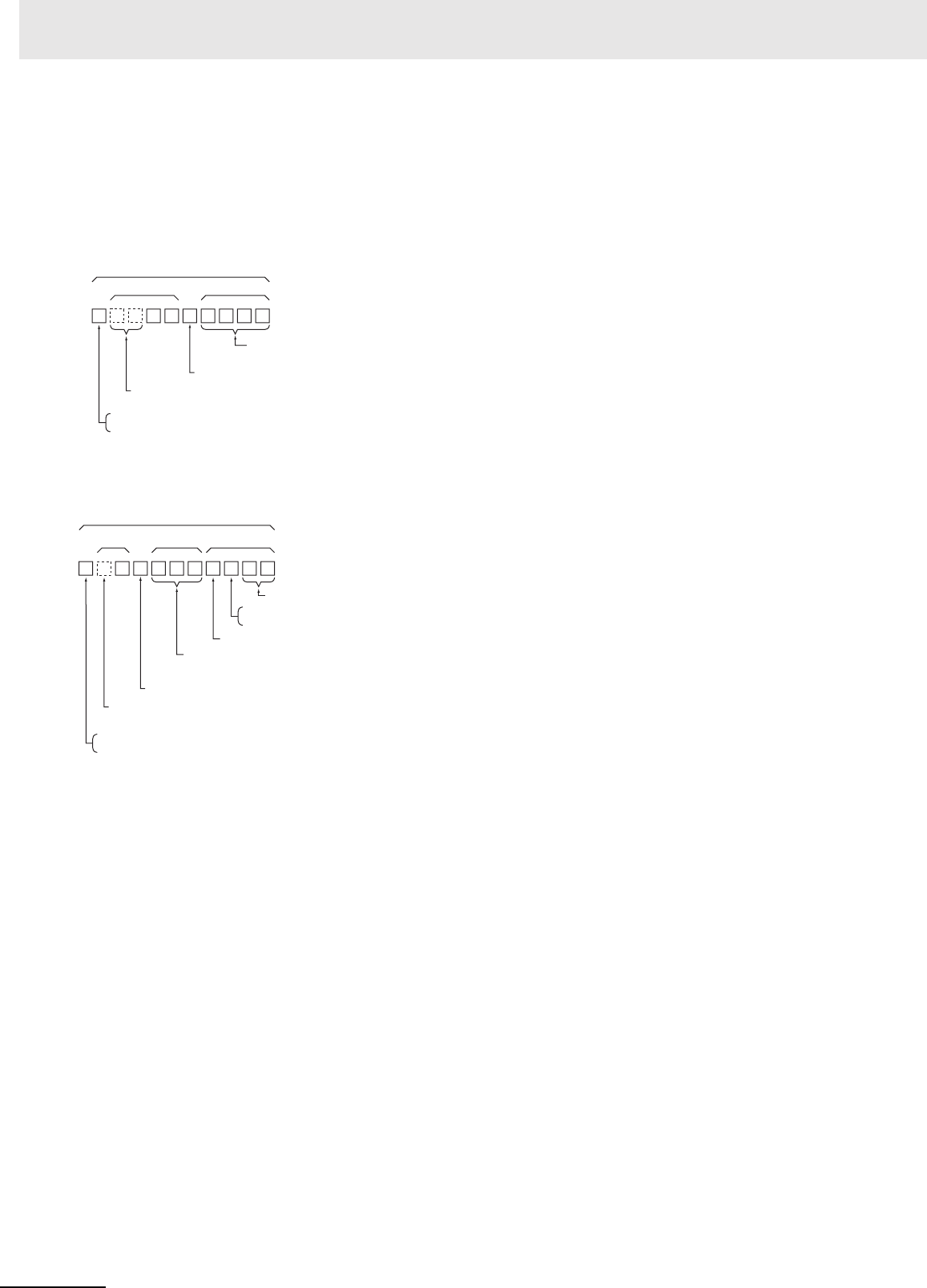
2 Instructions
2-246
CP1E CPU Unit Instructions Reference Manual(W483)
Storage of ASCII Text
After the floating-point number is converted to ASCII text, the ASCII characters are stored in the desti-
nation words beginning with D, as shown in the following diagrams. Different storage methods are used
for decimal notation and scientific notation.
Note Either one or two bytes of zeroes are added to the end of ASCII text as an end code.
• Total number of characters odd: 00 hex is stored after the ASCII text.
• Total number of characters even: 0000 hex is stored after the ASCII text.
Limits on the Number of ASCII Characters
There are limits on the number of ASCII characters in the converted number. The Error Flag will be
turned ON if the number of characters exceeds the maximum allowed.
• Limits on the Total Number of ASCII Characters
1) Decimal Notation (C = 0 hex)
• When there is no fractional part (C+2 = 0 hex):
2 ≤ Total Characters ≤ 24
• When there is a fractional part (C+2 = 1 to 7 hex):
(Fractional digits + 3) ≤ Total Characters ≤ 24
2) Scientific Notation (C = 1 hex)
• When there is no fractional part (C+2 = 0 hex):
6 ≤ Total Characters ≤ 24
• When there is a fractional part (C+2 = 1 to 7 hex):
(Fractional digits + 7) ≤ Total Characters ≤ 24
Total number of characters
Integer part Fractional part
Sign
Decimal point
If there are more fractional digits in the source data than specified in C+1, the extra digits will be rounded
off. If there are fewer fractional digits, zeroes (ASCII: 30 hex) will added to the end of the source data.
A decimal point (ASCII: 2E hex) is added if the number fractional digits is greater than 0.
Spaces (ASCII: 20 hex) are added if the integer part of the floating-point data is shorter than the integer part of the result
(total number of characters - sign digit - decimal point - fractional digits).
Positive number: Space (20 hex)
Negative number: Minus sign (2D hex)
Decimal notation (C=0 hex)
Scientific notation (C=1 hex)
Total number of characters
Total number of characters
E
Total number of characters
Integer part Fractional part Exponential part
Sign
Decimal point
Sign
0 to 9 are written as 00 to 09.
Positive: Plus sign (2B hex)
Negative: Minus sign (2D hex)
Letter E (ASCII: 45 hex) is written here.
If there are more fractional digits in the source data than specified in C+1, the extra digits will be rounded off.
If there are fewer fractional digits, zeroes (ASCII: 30 hex) will added to the end of the source data.
A decimal point (ASCII: 2E hex) is added if the number fractional digits is greater than 0.
Spaces (ASCII: 20 hex) are added if the integer part of the floating-point data is shorter than the integer part of the result (total
number of characters - sign digit - decimal point - fractional digits - E digit).
Positive number: Space (20 hex)
Negative number: Minus sign (2D hex)


















